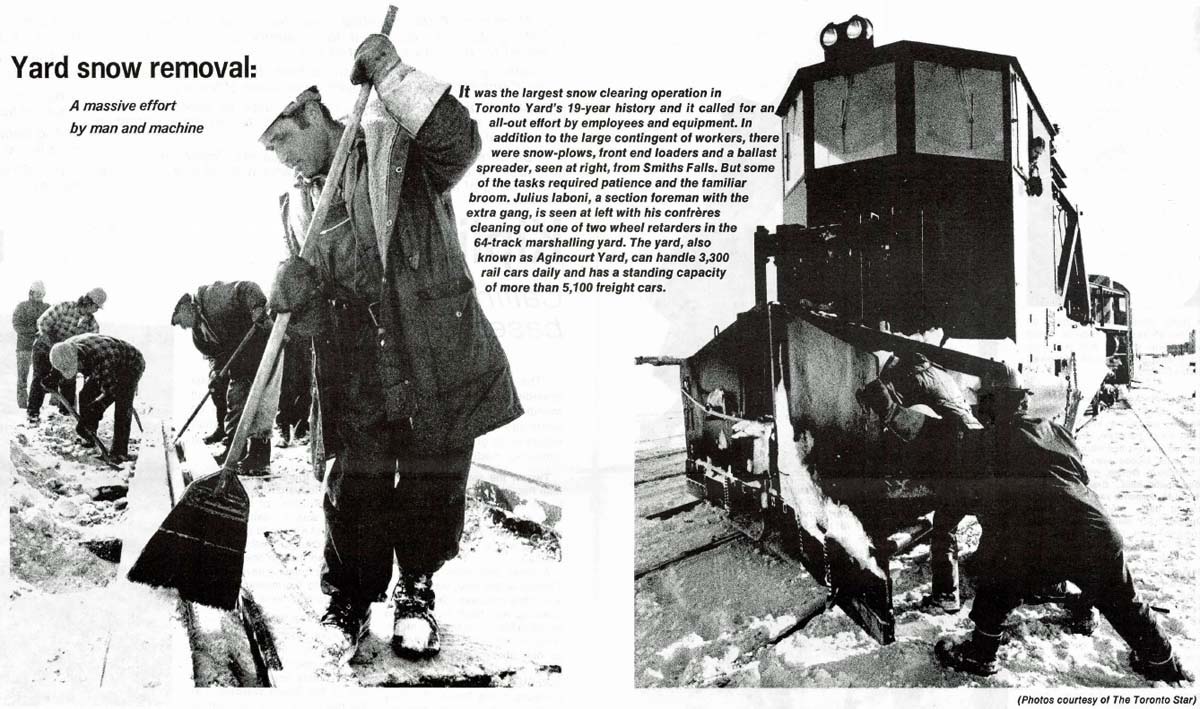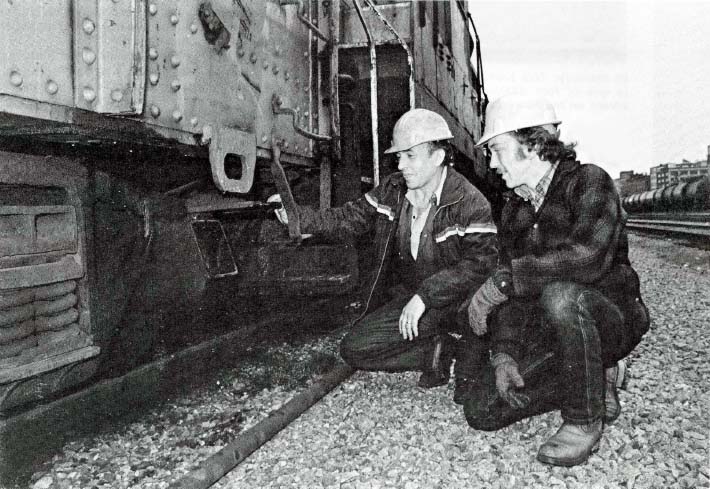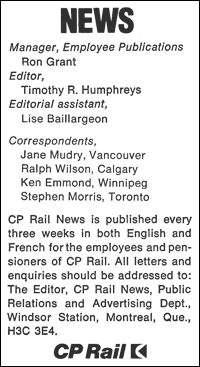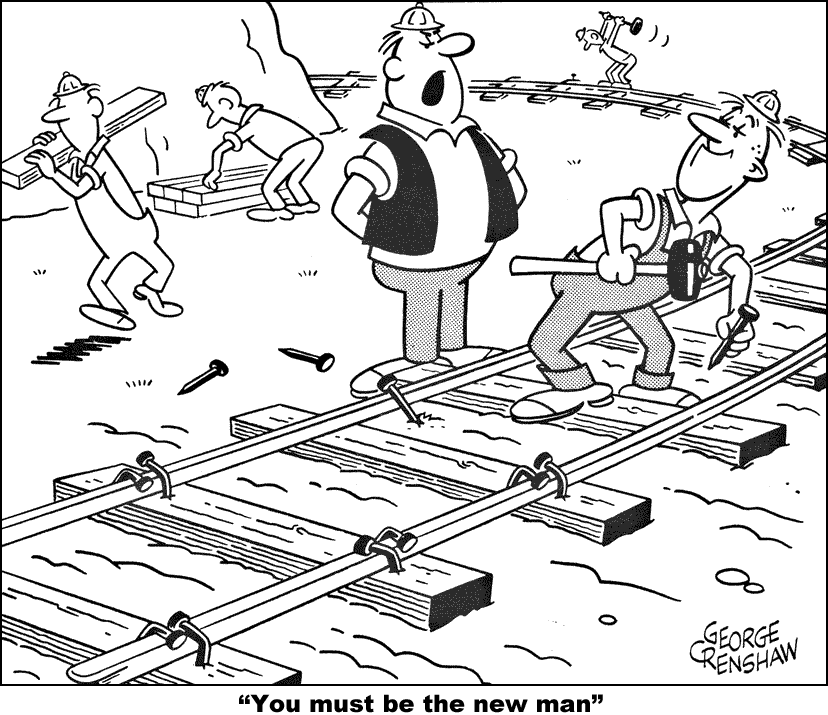|
|
Vol. 12
Number 4 March 17, 1982 |
 |


"The better educated you are, the better job you're able to do, the easier you're able to do it, and the further you can progress,"
says 21-year-old carman apprentice Leon Pesklevits.
Leon has always had a strong commitment to furthering his education. He was in the academic program in high school and planned to become a teacher, however, during his final year at high school the job outlook wasn't promising. Instead, Leon applied for the apprenticeship training program at CP Rail, wrote the qualifying exam, and was hired as an apprentice carman in February, 1978.

The training courses are structured to expose apprentices to all aspects of the vocation.
During the past four years, Leon has been a car inspector and a caboose carpenter, he has worked in pre-shop inspection, air brake shop, light and heavy repair areas, train yards, and the regional mechanical office.
Rotation to each job is normally done at three-month intervals because, according to Supervisor of Training Pat O'Shea, "the policy is to move apprentices through the various work locations so that they receive hands-on experience in the many facets of their craft."
A carman's role is to "inspect and maintain rolling stock handled by CP Rail. He is essential to the operation of train yards because he performs safety and mechanical inspection of freight equipment,"l he says.
In our repair shop, the carmen maintain the fleet and upgrade it to meet the changing requirements of the transportation industry.
Although Leon will graduate from the apprenticeship program in June, this will not signal the end of his education, only a change in direction.
In addition to working full-time for the railway, Leon has been taking evening courses at Douglas College, and has earned partial first year credit towards his Diploma in Business Administration.
Leon originally enrolled in the general arts program at the college and had nearly completed his first year when he transferred to business administration. He made the switch because he believes a business education complements his long-term career goals and will enable him to gain a theoretical understanding of personnel and management practices.
Leon looks back on his progress and recalls, "On my first day on the job I changed a pair of wheels on a car. I had to pour the oil and carry things. I didn't know what I was carrying or why."
"Today, when I change wheels I know what I'm doing, why I'm doing it, and most important, I'm confident in my ability to do the job properly
and safely." The soon-to-be carman views his potential for promotion within the railway as excellent because of his qualifications and because
the managerial structure is designed to facilitate promotion from within.

 and is reprinted here with their permission.
All photographs, logos, and trademarks are the property of the Canadian Pacific Railway Company.
and is reprinted here with their permission.
All photographs, logos, and trademarks are the property of the Canadian Pacific Railway Company.